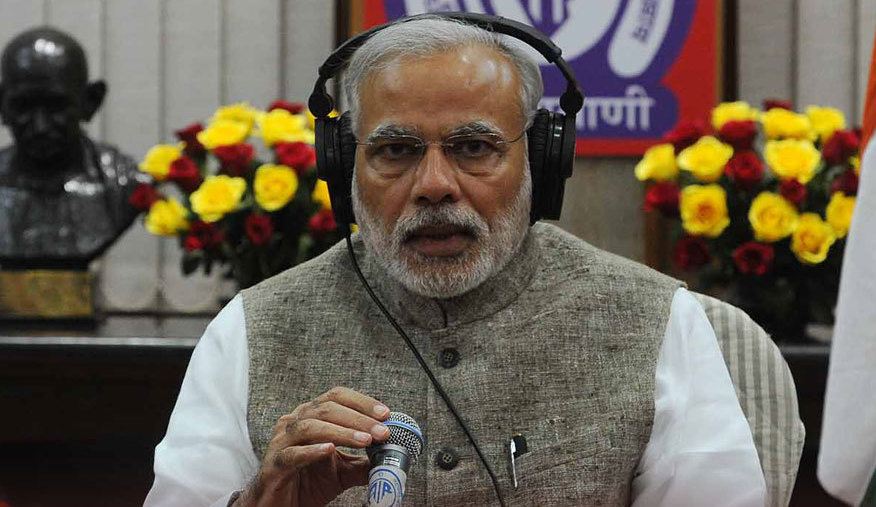Radio rhetoric: How India’s prime minister uses the airwaves to push his agenda

Prime Minister Narendra Modi during "Mann ki Baat" on All India Radio, 2015
Anna Johnson - Where do you get most of your news? The answer to that question likely depends on your age. Young people aren’t getting their news from newspapers or even nightly newscasts. They choose to get their news from social media sites and, increasingly, from podcasts and radio shows. These alternative media structures circumvent traditional news institutions where journalists and editors choose how to frame stories and what to cover. Anyone can start a radio show - including India’s prime minister, Narendra Modi.
Mann Ki Baat, which loosely translates to ‘Conversations From the Heart,’ is Modi’s talk show where he addresses systemic problems like water conservation and opportunities for India’s youth. Modi creates an air of interactivity by asking his social media followers to contribute topics for his next show, but every word and interview is carefully chosen by his communications team. The radio show gives Modi complete control over his messaging to the Indian people and to the world. There are no opposition journalists to ask questions or counter his rhetoric - just him and his microphone in his home recording studio. This is a way for him to exercise ideological power or the ability to get others to do or believe what you want, willingly. Modi has been carefully constructing the media environment around him to be as complimentary as possible since he first took office in 2014. Because of his strict control over information distribution across India, any criticism of his message or his policy is limited in its scope and ability to challenge his underlying message. In this one-party media environment, Modi and his allies have been able to cement their power, winning larger and larger majorities in each election. Prime Minister Modi has created a news machine whose cycle furthers his message and his political power with every report. When people aren’t presented with a counter-narrative in the media, Modi’s rhetoric looks like the truth.
Mann Ki Baat reports more than 250 million monthly listeners, though most of Modi’s communication with the average person comes on social media through edited clips from his radio show. He has nearly 175 million followers on Twitter, Instagram and Facebook who watch and share his radio show regularly. Modi uses social media’s viral content sharing algorithms to reach beyond his regular audience. Social media enables the flow of information from the radio show, to the post on Modi’s social media page, to the pages of his followers and their followers. This flow avoids the boundaries set up by traditional media structures like paywalls and editorial boards, connecting the listener directly with Modi and enabling his direct style of carefully crafted communication.
Photo Credit: Prime Minister's Office, Government of India, CC BY-SA 2.0, via Wikimedia Commons

